|
(Disclaimer: This is not professional or legal advice. If it were, the article would be followed with an invoice. Do not expect to win any social media arguments by hyperlinking my articles. Chances are, we are both wrong). Let me level with you: these here are some notes and musings from my time coaching at West Ottawa High School. But before we go any further, let me make one thing crystal clear: I'm no longer affiliated with the program and ain't currently coaching there. Nope. Nada. Zilch. Now, why am I sharing these pearls of wisdom with you, you ask? Well, my dear reader, it's because I want to help the wider wrestling community and see other programs flourish. These notes are a way for me to impart my hard-earned knowledge and experience, and hopefully make a difference. But, let me be clear, these thoughts are mine and mine alone. They don't necessarily represent the views of West Ottawa High School or its brass. So take 'em or leave 'em, it's up to you. Just know that they come from a place of passion and a desire to see the sport thrive. MEET THE TEAM NIGHT Picture this: the start of a new season, the air crisp with anticipation and excitement, as wrestlers, managers, statisticians, coaches, administrators, fans, faculty, the media, students, and parents gather together for a special event. It's called "Meet the Team Night", and it's a chance for everyone to come together, share their love for the sport, and get to know one another. Sometimes, the athletic department will throw a "Winter Sports Night" that covers all the winter sports, but if not, no worries! All are welcome to attend this gathering of champions. Parents, especially, are thrilled to see their offspring taking part in interscholastic athletics. And what could make them prouder than watching their child being acknowledged in front of their peers? The "Meet the Team" event shall take place on a weekday evening, when everyone can come together and bask in the glory of the upcoming season. Let's kick things off the right way and show our support for each other. After all, we're all in this together.
NEWSLETTER Imagine this: a simple yet powerful tool that can enhance your program's public relations, build a sense of camaraderie within your team, and even improve individual performances. What is this magical solution, you ask? Newsletters. Not only do they keep parents, fans, administration, and the community up-to-date on individual and team results, but they also boost loyalty and morale. With newsletters, you can update everyone on new rules, procedures, and techniques associated with wrestling. Plus, they're a great way to convey promotional or motivational messages and reduce potential complaints from parents or school personnel. But that's not all. Newsletters can also help build your credibility and professional standing, maintain fan interest in your program, and create a positive image about you and your wrestlers. It's a low-cost option that can have a huge impact on your program's success. So, if you're looking to take your program to the next level, consider implementing a newsletter strategy. Your wrestlers and their families will thank you for it. No matter what kinda newsletter you cook up, remember this: you're sending a message to the wrestlers and the community. And that's some heavy-duty stuff, man. So, pay attention to the details. Formats and styles? Yeah, sure, they can vary. But what really matters are the juicy bits that you gotta include, like:
MEDIA RELEASES You gotta be the top dog, the head honcho, the grand poobah of your wrestling program if you wanna make any headway. 'Cause if you're just sittin' around, twiddlin' your thumbs, and expectin' the school and media to do the legwork for ya, well, buddy, you got another thing comin'! Sure, it's gonna take some gumption and grit, 'cause most times, them newspapers and TV stations are more interested in that ol' pigskin and roundball than they are in a good ol' fashioned wrestling match. But don't you worry none, my friend. You just keep sendin' them press releases, whether they get published or not. And don't stop there! You gotta get on that horn and call up them news outlets. Make a pal out of one of them reporters or broadcasters. 'Cause if you can get just one of 'em on your side, it can make all the difference in the world. So keep at it, my friend, and soon enough, your wrestling program will be the talk of the town! If you want to make your awards program truly buzz-worthy, you gotta bring in the media. Yes, that's right, invite those journalists, reporters, and bloggers to your end-of-season shindig and let them spread the word far and wide. And don't stop there. Take the time to thank these media mavens for all the coverage and publicity they've given you throughout the season. Write a heartfelt letter expressing your gratitude and let them know how much you appreciate their support. Trust me, folks, the media can be your best friend or your worst enemy. So make sure you treat them right and give them a reason to sing your praises. Who knows, they might just make your awards program the talk of the town. SOCIAL MEDIA It's a modern-day paradox: the more connected we are, the less we communicate. Case in point: email. Today's youth view it as a relic of a bygone era, like VHS tapes or Blockbuster. If you want to get through to your athletes and fans, you must speak their language. And in this day and age, that language is social media. I know what you're thinking: "But Ryan, social media is just a bunch of kids posting selfies and cat videos. How can that possibly help me build my program?" First of all, shame on you for not following enough cat accounts. But more importantly, social media is a free forum to inform and indoctrinate others into your program. And if you want to reach today's athletes, you need to go where they live. And where do they live? On social media. I'm not saying you must spend all day on Instagram and Twitter, scrolling through memes and TikTok videos. (Although that sounds alright.) But you need to be intentional about how you use these platforms. Start by creating a team account and posting once a day. This will help build rapport and consistent motivation with your athletes. And don't just post generic quotes or blurry pictures of your training sessions. Tag specific athletes modeling the behavior you want to see in each post. This will make them feel recognized and valued, leading to better performance on the mat. But here's the key: do just what is necessary. Posting more than once daily will create much work for you, and nobody wants that. And if you post less, you'll dilute the impact of each post. So stick to one high-quality post daily, and focus on coaching, not snapping a hundred pictures or videos for each training session. Now, which social media channels should I be using? The answer is simple: Instagram and Twitter. They're easy to access, heavily leveraged by your athletes, and perfect for the real-time training atmosphere. And if you want to go the extra mile, consider creating a Facebook page as well. This will help you reach parents and alums who might be less active on Instagram or Twitter. We look at it this way:
STEPS IN SOCIAL MEDIA SUCCESS If you want to make a splash in the wild world of social media, jump right in and get your program involved on the big kahunas like Facebook and Twitter. Don't dilly-dally, don't hem and haw, dive in headfirst and make some noise! Get crackin'! Success is out there waiting for those with the guts to go after it, so what are you waiting for? Invest in Regular Program Features Your staff ought to reckon if posts, graphics, snaps, or flicks will tickle the fancy of your fans. Don't shy away from scrutinizing the savvy schemes of leading programs on their social networks. We, too, make use of hashtags like #techniquetuesday or #throwbackthursday. Create a Seasonal Entertainment Schedule: You must get creative with your entertainment options to make a splash in the marketing game. I'm talking about themed events that'll keep them returning for more, whether once a week, every other week, or once a month. Take it from me; consistency is one of the keys to making this work. People have to know what to expect and when to expect it. For example, at my old gig, we post our "off-season point winners" every week. That way, athletes and fans could see who was doing the work. But here's the thing, it's about more than just the content. You must develop a killer name that tells people exactly what they're in for. That's what will keep them hooked and coming back for more. So get those thinking caps on and start brainstorming because the possibilities are endless. Use Mantra-Related Themes: When contemplating the avant-garde forms of entertainment to proffer, it's paramount that you give considerable thought to the wrapping that envelops it. The packaging should be designed to generate interest and bolster the program's brand simultaneously. As you strive to concoct original concepts, like a weekly tutorial on techniques, you must focus on devising innovative names that will captivate your core target audience. The leading programs in this domain purposefully create monikers that embody the program's essence and become its mantra moving forward. Instead of simply christening it a technique video, take a cue from the wrestling world and christen it the "Pantherstyle Technique of the Week" series. This seemingly minor step can significantly augment your program's identity as a group that is imaginative and deserving of attention. Encourage Coach and Student-Athlete Interaction: Nowadays, to be a top dog in the marketing game, you must be on the social network scene. And I'm not talking about just putting out a couple of quotes or interviews on your Facebook and Twitter pages - that's the bare minimum. To make a splash, you must be actively involved in your program's online presence. The best coaches out there will be right in the thick of it, posting updates and engaging with fans on Facebook and Twitter. And let me tell you; it's not just about the coach - the whole team must be in on the action. The top staff knows their student-athletes are a vital part of the equation. They will encourage their players to get involved and provide unique perspectives on the team's social network sites. Make Interaction a Priority: So, here's the thing: If programs want to get down and dirty with their fans, they have to prioritize interaction. Sure, they can only reply to some of the little things, but if they take the time to engage, they tell their followers to hike. And that's no way to build a real relationship, right? It's just common sense. Cross-promote with Similar Entities: As you craft your kickass program schedule, remember that you hold the power to reach out to the bigwigs (NCWA, MWA, you name it) and give them a heads-up about your content by tagging them in your posts. And when you've brewed up some delicious competition with other programs, don't hesitate to tag them in your relevant posts to drum up some sizzling interest. My friends, the key here is to stay proactive and always hustle to expand your audience and fire up their passions for your program. The Value of Video Sharing In this modern age of media consumption, coaches have found solace in the sanctum of video-sharing platforms like YouTube. This digital haven promises to maximize its video content's reach and circulation, ensuring its message resonates with the masses. By integrating their videos into their social media feed, coaches can leverage the platform's dynamic interface to provide a seamless viewing experience for their audience. The ease with which consumers can click on the video and immerse themselves in its message without leaving the social media platform is a promotional game-changer. It's not just the accessibility that sets YouTube apart, though. The platform offers the ability to create a channel, allowing followers to subscribe to a coach's video updates, creating an intimate connection with their audience. This level of engagement and interaction is vital to any successful media strategy. So, for all the programs pondering where to host their video content, it's clear that YouTube is the way to go. Potential Bonus of a Blog The classic blog format involves writing short, sharp commentary and updates laced with links, photos, and videos. But that's not all, folks. One of the primary perks of a blog is that you can use it as a feeder for your social network sites. I'm talking Facebook, Twitter, and the works. Post a story on your blog, then sit back and watch those links share like crazy, thanks to the magic of modern social media. It's a beautiful thing. And the best part? A blog gives you total control over the content you're dishing out to your audience. You can let your creativity run wild and free, updating your blog on the reg with content that speaks to your tribe. Stay Professional You're not just posting into the void of cyberspace; you're representing something bigger than yourself. Your school, your team, and your whole darn program are looking to you to be a shining example of professionalism, both on the mat and off. That means every tweet, every interview, and every darn Instagram story you post is a chance to make an impact, for better or worse. So don't think for a second that you can kick back and relax because you're always on the clock. And let's remember your athletes, those young bucks who watch your every move. They're looking to you for guidance, for leadership, and you owe it to them to set the right example. So take a good, hard look at yourself and ask, "Am I presenting the kind of image that my wrestlers can be proud of?" The bottom line is this: you have a responsibility to yourself and your program to be the best darn coach you can be, both in the gym and online. So think before you post, and always keep in mind the impact that your words and actions can have. ATHLETE OF THE MONTH Listen, when it comes to being named Athlete of the Month, two things can make it a true powerhouse: Public recognition and praise. And let me tell you, receiving a shout-out in front of the whole team is a big frickin' deal. But don't just stop there. Be specific about why they're getting the award. Please don't be vague and generic because that won't cut it. Now, let's talk about the prize. As far as awards go, nothing beats being able to hold, wear, and show off your prize to your teammates, friends, and family. So make sure you create an award that's genuinely worthy of pride to own. And let's be honest; it's got to be authentic to your team's culture. For instance, my team uses prizefighter-style championship belts, and let me tell you, these babies are the real deal. You can flaunt them on social media and show them to anyone willing to listen. And there are no limits here, folks. You can make this award whatever you want, but it has to reflect what you believe in, what you stand for, and where you want the team's culture to go. But hold up, don't go crazy with this award now. It has to be reserved for a once-a-week rotation. That way, it keeps its value and doesn't lose its impact. So go ahead and create something that truly captures the essence of your team's greatness. And let the Athlete of the Month bask in their well-deserved glory. When recognizing excellence in athletics, there's a fine line between getting it right and missing the mark. You want to stay moderate and maintain the significance of the accolade. But your athletes will only remember about it if you do enough. So, what's the secret to striking that perfect balance? It all starts with aligning your awards with the behaviors you want to see. Three categories tend to be the most effective:
It's not just about pins and wins. The real value of excellence in the wrestling room lies in building a team of intrinsically motivated athletes who understand the importance of sacrifice and teamwork. By rewarding the benchmark heroes who embody these values, you inspire the team to strive for excellence. It's a powerful tool for building a winning culture. USING STATS IN WRESTLING It's a wild world out there in West Ottawa, my friend. They're using numbers like a pack of rabid wolves tearing into fresh meat. They know when their social media posts are getting the most attention, they're pulling out all the stops to get those precious clicks. It's a game of strategy and cunning, and they're playing it like champions. In a world where likes and follows reign supreme, can you blame them?. The key to victory? Statistics, my friend. Success rate statistics, to be exact. A coach must roll up their sleeves and watch countless films, breaking down each athlete's performance with painstaking detail. Every match must be analyzed, every shot counted. Did they make it or miss? These are the questions that need answering to develop the elusive success rate. It's a lot of work, no doubt about it, but in the end, it's the difference between a winning season and a disappointing defeat.. When developing a wrestling program, stats are crucial in determining the direction you want to take your team. As any seasoned coach will tell you, it's essential to consider what you're known for now and what you want to be known for in the future. Take a long, hard look at your wrestling style and ask yourself whether it's been effective. If not, it's time to make some changes. One thing to keep in mind is that your wrestlers come in all shapes and sizes. That means you must be able to teach your wrestling style to everyone on your team, regardless of their body type. Some techniques may be more effective for certain weight classes, so it's essential to incorporate alternative methods in certain situations to get the most out of your athletes. As a coach, it's also essential to empower your assistant coaches to specialize in certain technical regions that fit your wrestling style. This allows each wrestler to get individual attention and evaluate the most effective techniques. And just like a great kitchen team, you want your coaches to work together seamlessly, each member bringing unique strengths. In short, developing a successful wrestling program is all about finding the right ingredients and cooking up a winning recipe. It takes time, effort, and a willingness to experiment and try new things. But if you're willing to work, the results can be truly delicious. So, I used to be a high school wrestler, and our head coach was all about stats. He'd post our leaderboard on the locker room and wrestling room wall after every match, thinking it would keep us pumped and primed. But after a while, I started to see things differently. Through lots of experimentation, conversations with other coaches (not just in wrestling but across all sports), and some deep dives into the literature on sports psychology, I realized that this approach might not be as practical as we thought. Studies have shown that this stats obsession can backfire and suck the wind out of the sails of a significant portion of our team. Let me tell you about a wild one, a man they call Kerry Regner. These hombre coaches wrestling down in the heart of Arkansas, at Williams Baptist, no less. And get this - the program's only been around for two short seasons! As any coach worth their salt knows, stats are essential in wrestling. But here's the rub - it isn't easy keepin' track of all the numbers we want to keep track of. We're talkin' wins and losses, but also pins, technical falls, major decisions, and more. The list goes on and on, but we need more than what we can track. It's a tough gig, but ol' Kerry and his crew are up for the challenge.. We enjoy using statistics to inspire and motivate. It's a focal point, a different breed of persuasion when digits start to speak. Picture a coach saying, 'Your top game needs work.' No metrics, no analysis. The wrestler wondered, 'Why was my top game lacking?' A coach might reply, 'You had zero turns, that's why.' Or perhaps, 'Your top game was superb! You racked up 15 turns in the tournament.' Numbers reveal shortcomings as well as triumphs. In the gritty wrestling world, victory is not always within our grasp. Our warrior's fate lies in the hands of their adversary, rendering their hard-fought stats - wins, pins, and takedowns - a precarious business. It's not uncommon for our greenhorn grapplers to step onto the mat, their spirits aflame with the enthusiasm of youth, only to be met with a crushing defeat. As their comrades rack up the accolades, the struggle becomes real for the underdogs, thoughts of inadequacy creeping in. "Why bother," they ask, as their efforts seem to yield nothing but failure. It's a brutal sport, but persisting will reap the rewards. It's a strange paradox, but the ones who lose interest and skip out on off-season workouts are often the ones we need the most in our program. They're the average joes, the middle-of-the-road kids who make up the backbone of high school wrestling. Success in this sport hinges on teaching your athletes the tried-and-true fundamentals of an aggressive, physical wrestling style. And yet, these very fundamentals can be so grueling that they cause some of our most essential players to drop out. The key to unlocking their potential lies in helping these kids develop a growth mindset and shifting their focus to the process rather than the outcome. It's a tricky balance, but it's the quickest path to success when done right. So let's not give up on these kids just yet; they may be the ones who surprise us all in the end. Now, you take a gander at college volleyball. Those guys are on the ball, tracking every hit, every touch of the ball. They're like machines, processing data faster than you can say "spike." And what about baseball? Those guys are tracking every pitch, every move, every little detail. They know where the ball is going, they know the result. It's like they've got a crystal ball or something. But when it comes to wrestling, we're stuck in the dark ages. We can't even keep track of season leaders in takedowns. It's a sad state of affairs, my friends. We're like a bunch of blind mice trying to find our way through a maze. So what's the deal? Why are we lagging behind? It's time for us to step up our game, to start tracking every move, every point, every pin. We need to get with the program, folks. Otherwise, we'll be left in the dust, wondering what the hell happened. The wrestling world is going through a statistical metamorphosis, and we're now privy to more insight and analysis than ever. It behooves us to keep track of and compile statistics to measure the efficacy of the teaching technique. Based on those statistics, the method may need some tweaking or a complete overhaul. Each opponent brings a unique set of skills and styles to every match, and it's crucial to determine if your wrestling style can adapt accordingly. As I've learned, only some wrestlers respond to the same approach. It's essential to analyze if inexperienced wrestlers can succeed with the type of wrestling you teach. PANTHERSTYLE STATS It's time to start keeping and posting what I call "Pantherstyle Stats." These stats aren't about whether we win or lose; instead, they emphasize the actions that are within our control as wrestlers. What do I mean by Pantherstyle Stats? Well, let me break it down for you. We're talking about how many takedowns we attempted in a match, how many times we successfully defended against a takedown, or how many times we escaped from the bottom position. These are the kinds of things we can control, regardless of the match's outcome. Now, I know what you're thinking. "But Ryan, isn't winning the ultimate goal?" Of course, it is. But here's the thing: if we focus too much on the outcome, we will miss the process. And if we ignore the process, we'll never reach our full potential as wrestlers. So let's start keeping track of these Pantherstyle Stats. Let's celebrate the small victories that we achieve along the way. Let's emphasize the actions we can control and let the outcome take care of itself. That's the Pantherstyle way, folks. And trust me, it's a recipe for success. Picture, if you will, a wrestler caught in the throes of competition. Does he spring to his feet like a lion on the savannah or slink back to the center with the resignation of a domesticated housecat? And when the match resumes, does he barrel forward with an intensity that would make a freight train blush or hang back with the timidity of a mouse? These are the kinds of questions that Pantherstyle Stats aims to answer. But the beauty of this statistical approach is that it doesn't just apply to what happens on the mat. Oh no. Pantherstyle Stats recognizes that wrestling is a way of life, permeating everything from moving to thinking. It's no surprise that wrestling coaches have found these metrics to be a valuable tool outside of the wrestling room. Whether you're strategizing for your next match or simply trying to live your best life, Pantherstyle Stats will help you get your head in the game See, it's not all about raw talent and experience. No, no, no. It's about what you can control, what you can manipulate. And that's where our wrestlers shine. Every single kid on our team has the power to be a champion, regardless of their skill level. We're not talking about some exclusive club for the elite wrestlers here. Oh, no. We're talking about a level playing field where the new kids can rub elbows with the veterans. But don't get it twisted, my friend. We're not just winging it here. We know what it takes to succeed, and we're emphasizing that style of wrestling like nobody's business. It's a style that's tried and tested, and we know it'll lead to a whole lotta success. And you know what the best part is? These stats we keep track of, they keep all our kids motivated and locked in. They remind them of the process, the grind, the blood, sweat, and tears that go into this sport. Wrestling hard, physical, and aggressive from start to finish. That's what it's all about. It's essential, my friends, to evaluate whether your wrestling style can be helpful for all the wrestlers in your program, from inexperienced to experienced wrestlers. We must all be on the same page, coaches included. And let's remember the art of surprise! Ensuring that your wrestling style cannot be easily scouted is vital. Yes, having a solid technique base is the core of your wrestling program and is a critical component for developing your athletes and positioning the team for success. To achieve this, we must ensure that our technique base fits together like a well-oiled machine, complementing each technique. We must incorporate drills and skills in practice that allow our wrestling style to be effective. So, let us consider the following elements when evaluating and honing our technique base this season: Is our wrestling style useful for all our wrestlers, regardless of their level of experience? Are all coaches in agreement about our style? Are we throwing our opponents off their game with our unpredictability? Do our techniques work seamlessly together? And finally, are we incorporating effective drills and skills in our practices? You see, there's a move that's number one worldwide called the single-leg takedown. Now, if you want to up your chances of a successful takedown, you must focus on just one of those legs, not both. Simple. But that isn't all, folks. When you find yourself at the bottom of the pile, you must think quickly and act even quicker. That's why we're all about their escapes, not reversals. Because they got a higher success rate. So don't get all tangled up; remember: one leg, one escape. That's the name of the game. ORGANIZATION OF STATISTICIANS Statisticians' Guidelines for West Ottawa High School Wrestling Clear Expectations for Managers: Before the start of the season, sit down with managers and communicate clearly what is expected of them. Emphasize their crucial role in the team and how they often serve as a liaison between coaches and wrestlers. Make sure they take stats at the mat side. Objectives: The following objectives are to be pursued by the wrestling statisticians at West Ottawa High School:
Membership: Membership is open to all students in grades 9 - 12. All members are required to learn the scoring system associated with wrestling before the start of the season. Fundraising will be conducted by all members, including selling programs, advertisements, and bake sales. Requirements:
Guidelines for Wrestling Managers: Rules:
CLOSING As we near the conclusion of this chapter, we've traversed a variety of tactics that coaches can employ to construct and advance a triumphant wrestling program. We've acquired knowledge about the significance of marketing and promotion in boosting visibility and generating interest in the sport. Coaches can establish favorable relationships and entice potential sponsors by forging exceptional team materials, instilling a sense of community, and effectively utilizing social media. Moreover, we've delved into how scrutinizing statistics and empowering assistant coaches can contribute to the team's victory. However, coaches must be cautious to avoid allowing their fixation on figures to ricochet and instead concentrate on alternative approaches to maximize each athlete's potential. Lastly, we've emphasized the paramountcy of nurturing a growth mindset in wrestlers and pivoting their focus to the journey rather than the destination. While triumph may not always be attainable, persevering through the obstacles will ultimately culminate in victory. As coaches continue to navigate the raw, unyielding universe of wrestling, these strategies will indubitably prove to be beneficial in attaining their objectives and cultivating a flourishing program That's all for now. I hope to get this all out there eventually.
WORK CITED:
0 Comments
Leave a Reply. |
AuthorRyan Lancaster wears many hats. Dive into his website to learn about history, sports, and more! Archives
April 2024
Categories |

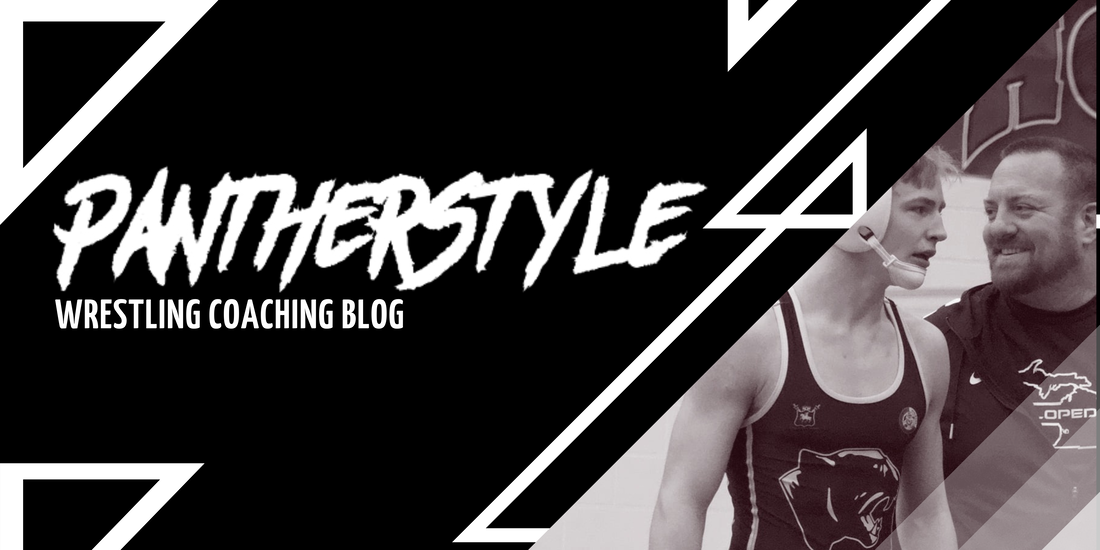
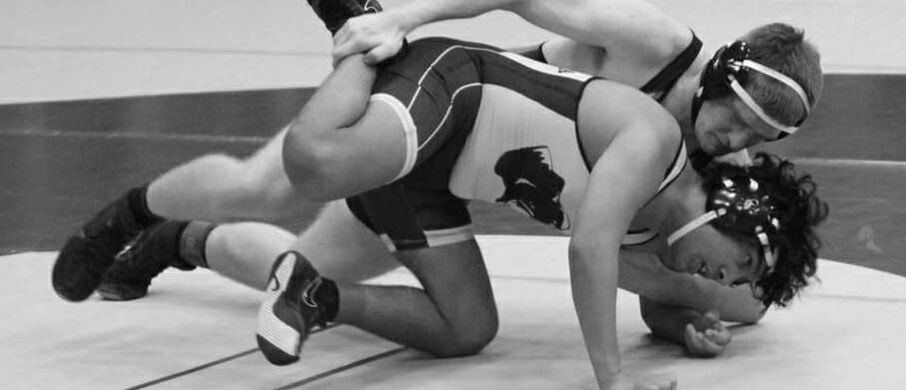
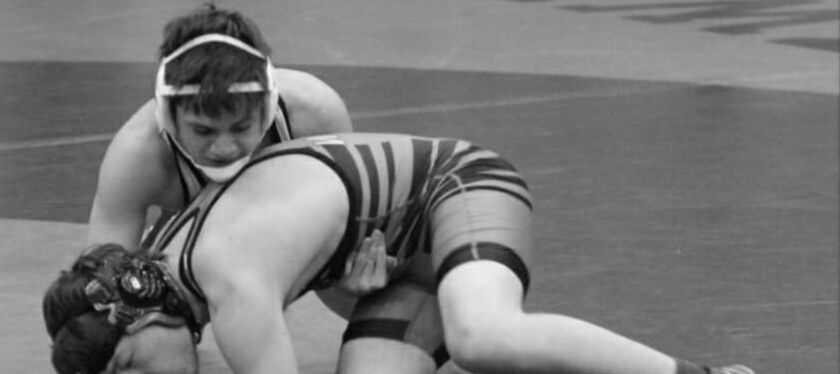
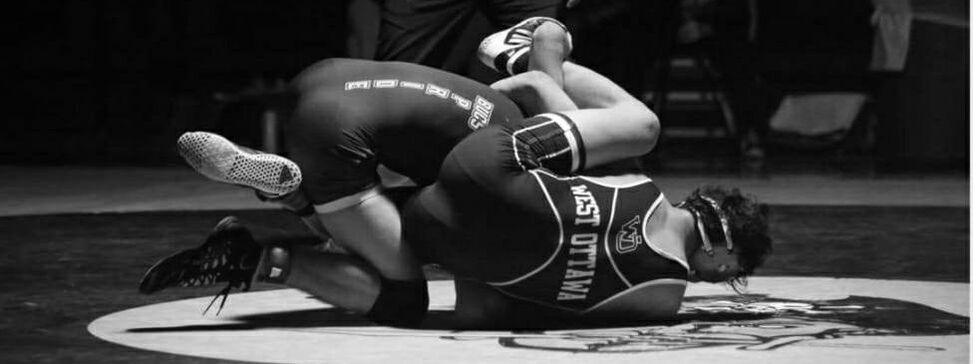
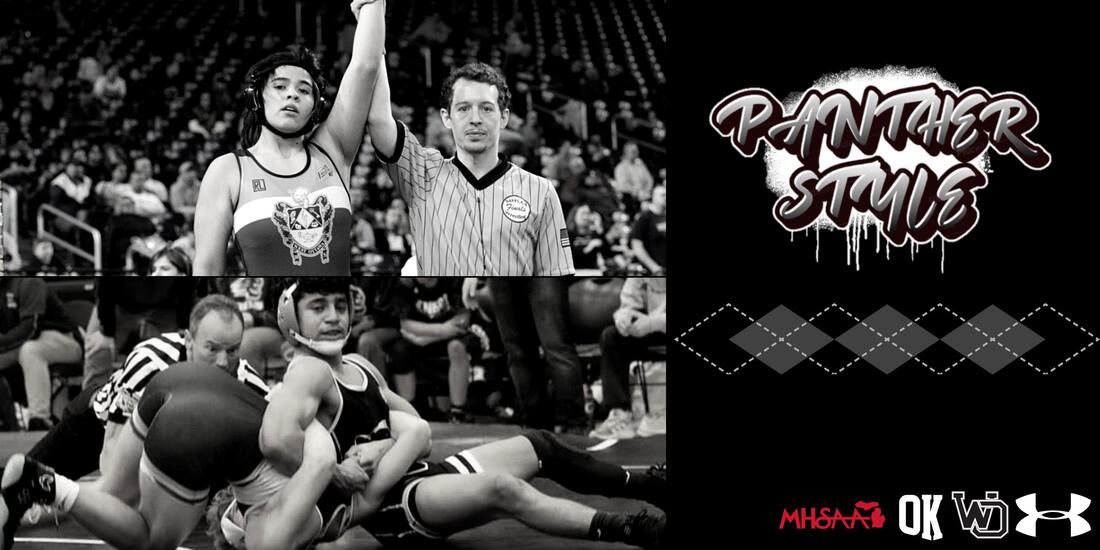
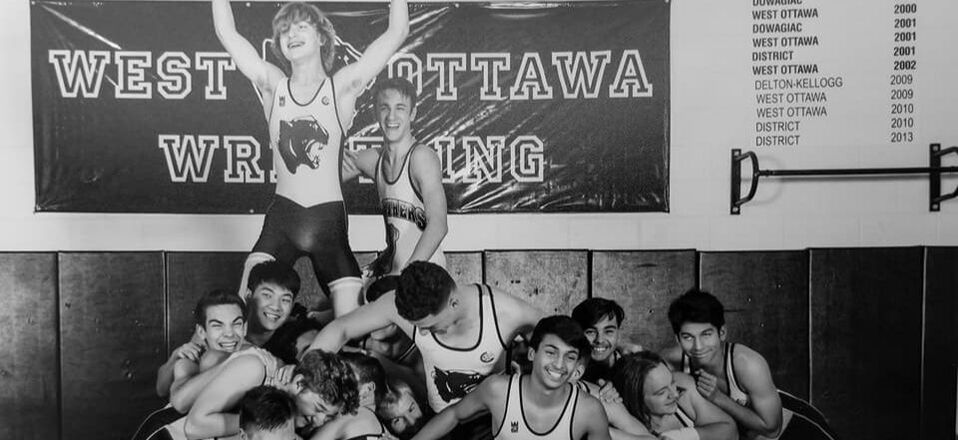
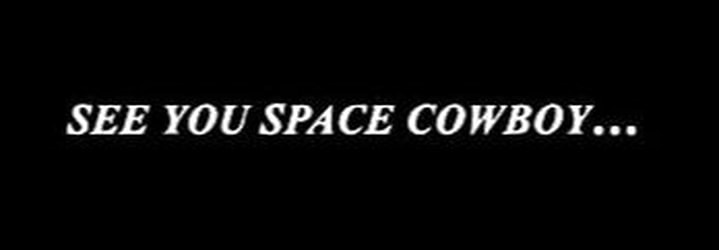
 RSS Feed
RSS Feed